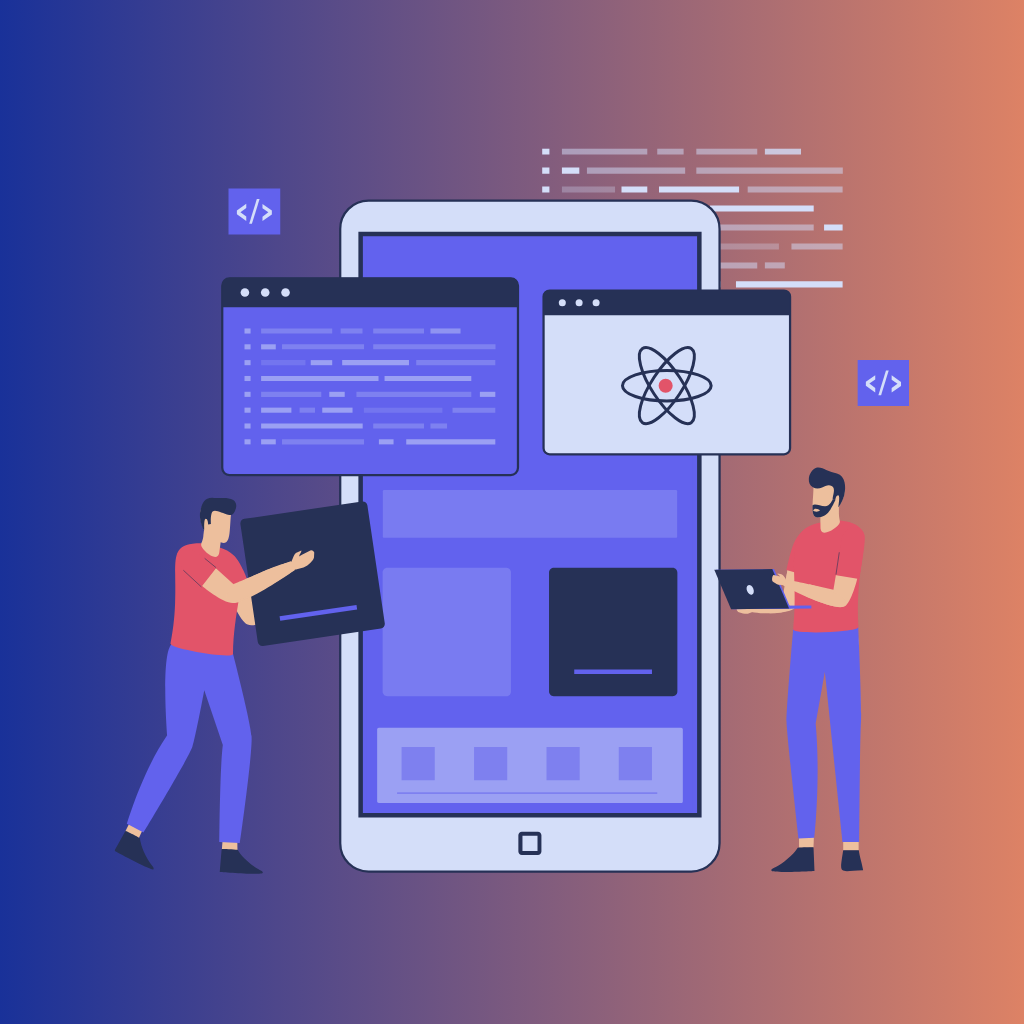Development speed is very important today in this fast-moving digital world. The ability to develop and deploy web applications very fast might be a game-changer for businesses and developers alike. In this digital world, probably one can hardly overemphasize the need to stay ahead of the competition because of a quick time to market with the ideas you have in mind.
For business, rapid development means faster market entrance and, therefore, quick reaction to market changes, customer demands, and new opportunities. All this leads to great agility that goes a long way in impacting competitive advantage since companies would be able to launch new features, products, or services in advance of the rivals. Additionally, this would help in quickly collecting feedback from the users and making iterations in the product, so the final product would fulfill user needs and expectations.
In essence, speed is facilitated with which web development takes place, and, therefore, there is a smoother and sounder approach for consideration of better business strategies and the technological advancements that have to be made. This is so that businesses and developers work not harder, but much smarter when they make use of the right methodologies, tools, and practices.
Adopting Agile Methodologies
Description of Agile Principles
Agile methodologies have completely changed the way web development projects are managed and carried out. Basically, they are a collection of principles and practices meant for flexibility, collaboration, and meeting customer satisfaction. The Agile Manifesto was introduced in 2001 and defines four key values:
- People and Interactions Over Processes and Tools: Emphasizes the importance of teamwork and communication.
- Working Software Over Comprehensive Documentation: Focuses on the delivery of working software at an ongoing rate.
- Customer Collaboration Over Contract Negotiation: Emphasizes constant contact with the customer so that their needs can be better met.
- Responding to Change Over Following a Plan: It encourages a culture that is responsive and flexible to changing needs.
These values are implemented through practices in the Agile methodologies, such as Scrum and Kanban. For example, Scrum breaks a project into small, manageable iterations, which are usually within a time-frame of two to four weeks commonly known as sprints. Every sprint has an objective of delivering a potentially shippable product increment to obtain regular inspection and adaptation. On the other hand, Kanban simply visualizes workflow using a Kanban board to enable teams to manage and optimize their processes in real time.
Advantages of Agile for Development Speed
Here are the benefits of Agile methodologies that can dramatically speed up web development:
- Faster Time-to-Market: Agile practice is iterative, so any functional part of the application is delivered almost instantly. That means businesses can quickly bring products or features to the market and stay ahead in the competition.
- Enhanced Flexibility and Adaptability: Agile allows teams to accommodate changing requirements and market conditions. In this era of one technology riding on top of the other, staying still doesn't help.
- Improved Collaboration and Communication: Regular meetings, such as daily stand-ups and sprint reviews, encourage better communication among team members and with stakeholders. It fosters the identification and resolution of problems quickly, thereby helping to keep the project on track.
- Continuous Feedback and Improvement: Agile can be said to be very focused on user and stakeholder feedback. It helps a team to hone continuously the product to what is expected by the user, hence reducing the risk of expensive rework.
- Increased Productivity and Efficiency: As the project is broken down into smaller tasks and value is delivered in small sprints, the team can now work at their normal pace without the feeling that they are under pressure. Structured approach leads to increased productivity and, therefore, more effective utilization of resources.
- Risk Management: The incremental approach under Agile methodologies may help recognize possible issues in time and, in this manner, lessen risks of disastrous outcomes. On the other hand, reviews and retrospectives at regular intervals will also help the teams learn from experience and avoid repeating the same mistakes over and over.
- Better Quality Products: With Agile, the testing and integration are continuous, so the emphasis on quality is high, making the product robust, reliable, and least prone to defects and issues. In summary, Agile practices make the process of web development greatly streamlined, more time-efficient, and aligned with the goals of the organization. By embracing Agile principles, it makes it possible for teams to be able to deliver products of higher quality quickly, accommodate changes in requirements, and foster cultures of improvement and continuous collaboration.
Use of Frameworks and Libraries
Popular Web Development Frameworks Overview
In web development, frameworks and libraries are two very important things that make the development process easy. They allow developers to use pre-built functionalities and standardized patterns for developing applications that are robust and scalable. Here's a brief overview of some popular web development frameworks:
- React: Another one of Facebook's offerings, it's a JavaScript library used for building user interfaces. It can be said to have a very strong component-based architecture, hence it allows the developer to build reusable UI components. The virtual DOM in React improves performance by ensuring there's a minimal direct manipulation of the actual DOM.
- Angular: This is another complete framework by Google to develop dynamic web applications. It uses TypeScript and comes with things straight out of the box, such as two-way data binding, dependency injection, and its powerful CLI (Command Line Interface) for managing projects.
- Vue.js: Vue.js is a progressive JavaScript framework that can easily integrate with other projects or libraries. It has been built to be incrementally adoptable, hence developers can use as much or as little of the framework. It works perfectly well for building user interfaces and single-page applications.
How Libraries and Frameworks Save Time
It can very much expedite the development process by the use of frameworks and libraries in the following ways:
- Pre-built Components: Frameworks like React, Angular, and Vue.js come with many pre-built components and modules that, in turn, can be reused across different parts of the application. This way, the developer may not have to write a huge codebase from scratch.
- Standardized Practices: The frameworks enforce best practices on coding standards, which makes the project consistent in behavior. This is useful with large teams where several developers are working on one codebase.
- Community Support: Large communities support active and popular frameworks, bringing an enriched ecosystem of plugins, extensions, and tools; this helps in providing solutions to general problems, hence saving developers a lot of time spent in debugging and troubleshooting.
- Development efficiency: Frameworks usually come with a bundle of tools to do the work associated with, for example, state management, routing, and form handling. It leaves the developer with work more on the development of features rather than setup of basic infrastructure.
- Optimized Performance: Many come with performance optimization techniques right out of the box. For example, React's Virtual DOM and Angular's Ahead-of-Time (AOT) compilation help improve speed and efficiency in application.
Tips to guide you select the Perfect Framework for your Project
Choosing the right framework or library for the project can mean a difference between success and failure of the project. Here are some tips to guide you to make the right choice:.
- Project Requirements: Gauge the project requirements or needs. If you are working on a complex, large-scale application, then you should consider a powerful framework like Angular. If it is a small project, even a component-based one, React or Vue.js will be considered better.
- Learning Curve: Consider the learning curve associated with the framework. If your team already knows JavaScript, for instance, they may be able to more easily learn React or Vue.js because both can be written in JavaScript and not TypeScript like Angular does with all its other features.
- Community and Ecosystem: Review how big the community is and the ecosystem of the framework. The bigger the community around a given framework, the more resources you will be able to draw from for tutorials, plugins, and troubleshooting advice.
- Performance Needs: Get to know the performance needs of your application. Some frameworks will be better for performance needs, because of their optimization techniques and architecture, than others.
- Scalability: Check the scalability of the framework in your project. Choose a framework that will grow with your project to cope with the increasing complexity over time.
- Integration Capabilities: Make sure the framework can easily gel with other tools and technologies that you might want to use. For instance, if you really must have strong state management, make sure that the framework has libraries that are compatible with it or has built-in support.
- Documentation and Resources: Scrutinize the quality of documentation and resources available for learning. Good documentation can save you hours in catching up with the framework. In short, frameworks and libraries are all about fast web development. A developer can be more productive and focus on the delivered quality of the application by adopting pre-built components, standardized practices, and community support. Of course, a decision on the choice of the best frameworks should be driven by project requirements, expertise within the team, and the potential for future scalability.
Automating repetitive tasks
On Task Runners and Build Tools
Web development uses a lot of automation to have improved efficiency and productivity. Task runners and build tools are an integral part of the process of automation, as they allow developers to manage and streamline repetitive tasks. Let's go through a few popular tools:
- Gulp: Gulp is a task runner for code over configuration. It allows developers to write tasks in an incredibly simple and easy-to-understand manner with JavaScript. It is excellent at automating any nontrivial operation in the workflow, such as minification of files, image optimization, and pre-processing CSS.
- Grunt: This is yet another task runner tool that is common and comes with a very large number of available plugins. This is configuration over code—basically, we're describing tasks in a configuration file. It is flexible and can handle tasks such as file minification, running tests, and compiling Sass.
- Webpack: Webpack is a strong build tool and module bundler that takes modules with dependencies and generates static assets representing those modules. Webpack is very useful, most especially in dealing with JavaScript modules and transforming front-end assets like styles, images, and fonts.
Make Minification, Linting, and Testing Automatic
Some of the key benefits of automation of repetitive activities include:
- Efficiency and Speed: Automation significantly reduces the time it takes to accomplish repetitive tasks. For instance, hand-minifying CSS and JavaScript files could be one heck of a job, but with the aid of a task runner, it will only take seconds. This efficiency allows developers to focus on more complex and creative aspects of the project.
- Consistency and Standardization: Automated tasks help in keeping the processes consistent each time they are done. For example, linters enforce standards for code and maintain the quality of the code with the whole team. In this sense, consistency is vital for any large project where the codebase is the result of many developers' work.
- Error Reduction: In general, human procedures are an easy victim of errors. Automating testing and other procedures helps to catch any mistake as early as possible in the development process, so there is less chance for bugs to reach the final product. The automated tests can be run very frequently and consistently across the test structure, and this automatically assures that new code changes do not introduce any regressions.
- Increased Performance: Tools like Webpack minify assets to improve performance. For instance, minification reduces the size of CSS and JavaScript to make web pages load faster. There are also optimization tools for images to reduce their size without losing quality in order for a website to be more performant.
- Streamlined Workflow: Automated tools synchronize well with the development workflow. CI systems can execute automated tasks at the push of each code in a repository, thereby ensuring a clean and working codebase. This, in turn, leads to efficient, reliable development processes.
- Scalability: Automated processes are easily scalable with the project. As the codebase grows, testing and build tasks are becoming more challenging. Automation tools sail through all such added complexity, and they are easily managed without increased manual effort, allowing the development team to scale the application.
- Documentation and Knowledge Sharing: Elaborate on configuration files and scripts of automated tasks that document the development process, so new team members can get to understand the workflow; this contributes to knowledge sharing within the team.
Real-world Applications
To get a sense of the might of automation, let's consider a typical example within the context of web development:
- Minification: Manually minifying CSS and Javascript files is quite a pain. With Gulp, you could set up a task to run every time you make changes to those files so that they are automatically minified. These things are thus production-ready; you don't need to do it manually.
- Linting: Code quality can be built into the development process using tools like ESLint with task runners. Automated linting will check your code against some standards so as to warn you of some errors and issues within your code. Automation of this action will ensure the cleaning and consistency of the code.
- Testing: Automatic testing frameworks can be set up, such as Jest or Mocha, where tests are performed on every change. Tests can be incorporated into a CI pipeline, where they provide instant feedback on the functioning and quality of the code. Task automation is, therefore, one of the important approaches to boosting productivity and efficiency within web development. Task runners and build tools are going to help developers in attaining features of code quality within less time, thus a reduction in errors. This thus provides a higher standard of quality for coding. It produces fluid and scalable development processes, and consequently, one can complete projects more quickly and reliably.
Implement Continuous Integration and Continuous Deployment (CI/CD)
CI/CD Explained and Its Importance
Continuous Integration and Continuous Deployment are two of the most basic practices in modern web development to help the process of software delivery. They are collectively known as the CI/CD pipeline, which is a series of automated steps to ease the process of integrating and deploying code changes.
Continuous Integration (CI) is the practice that involves integrating all developers' working copies into a shared mainline several times a day. Each integration is verified through an automated build (including tests) to detect integration errors as quickly as possible. The main goals of CI are to:
- Identify Errors Quickly: By integrating and testing code frequently, teams can catch and fix bugs early in the development process, preventing them from escalating into larger issues.
- Better Collaboration: CI encourages developers to merge changes more often, which results in improved communication and fewer merge conflicts.
- Maintain Code Quality: Automated tests and static code analysis tools are run as a part of the CI process, so you can maintain consistent code quality.
Continuous Deployment (CD) takes the automation one step further by deploying every code change that passes the CI tests into the production, thus ensuring continuous release of new versions of the application to users. Key benefits to CD:
- Faster Time-to-Market: Automated deployments bring the release of new features, bug fixes, and user improvements into effect more frequently and faster.
- Mitigated Risk: Smaller, incremental changes are easier to test and deploy, so the risk of something huge going wrong in production is not as high. In the case of a problem, it is easier to roll back or fix a small change.
- Enhanced Reliability: Automated deployments lessen the possibilities of human errors, making the process of deployment more reliable and consistent.
Together, these CI/CD practices enable a development team to deliver quality software with responsiveness to effective user feedback while continuing to maintain a rugged, stable, and reliable application.
Tools of CI/CD
There are a number of tools for implementing CI/CD pipelines, each with different features and integrations. Some of the most popular are:
- Jenkins: Jenkins is an open-source automation server with over a thousand plugins to make easy the building, deploying, and automation of any project. It is highly customizable and pluggable with practically any tool or service. Jenkins supports both continuous integration and continuous deployment, making it a complete solution for automating the whole development pipeline.
- Travis CI: Travis CI is a cloud-based CI service and works perfectly with GitHub. It automatically creates the build and tests of changes you make in code, returning the results in minutes. Travis CI is famous for its ease of use and quick setup, making it a popular choice for open-source projects and small to medium-sized teams.
- CircleCI: It is an influential CI/CD cloud domain tool with strong features in automation of the build, test, and deploy process. It supports many languages and frameworks and also integrates with popular version control systems like GitHub and Bitbucket. The two main features of CircleCI are speed and scalability, making it suitable for teams of all sizes.
- GitLab CI/CD: GitLab has an in-built CI/CD that is natively built to give you an experience like none other with it. It allows developers to describe their CI/CD pipelines by writing them down using an explicit but easy-to-write YAML file. It also includes a GitLab CI/CD that supports the widest range of environments and has full-featured support for the whole development lifecycle.
- Azure DevOps: This is an end-to-end tool chain by Microsoft which helps in continuous integration and continuous deployment. Azure DevOps has a service known as Azure Pipelines, which builds, tests, and deploys applications within no time, totally well-integrated with other Azure services. It scales up very highly and provides support for a wide array of languages and platforms.
- GitHub Actions: This is GitHub's CI/CD tool that runs natively inside GitHub. It provides support for workflow automation directly from repositories. It also supports running custom scripts and integration with other services provided by GitHub, making it a comfortable option for teams already using GitHub for version control.
Implementing CI/CD
Implementing CI/CD is the practice of automating a pipeline of processes that take care of code integration, testing, and deployment. Here's a high-level overview of the process:
- Set up version control: Ensure your codebase is in version control, such as Git. This is the basis for any CI/CD pipeline.
- Define Build and Test Steps: With a CI tool, you will define the build and test steps. In other words, how the steps will compile the code, run automated tests, and perform static code analysis.
- Configure Deployment: Set up automated deployment steps after successful build and test stages, possibly including deployment to staging or production environments.
- Monitoring and Iteration: Continually monitor the CI/CD pipeline for any issues and then iteratively further the process to optimize it for more efficiency and reliability. Solicit feedback from your team and adjust accordingly. Overall, CI/CD is a vital development in the direction of enhancing productivity and dependability during web development. It makes automated integrations and deployments of code changes more practical by using tools like Jenkins, Travis CI, and CircleCI, so it ensures the faster delivery of quality software and responsiveness to user needs.
Development Workflow Optimization
Tips for Effective Code Management and Version Control
Efficient code management and version control are vital to ensuring a smooth, well-run, and productive development workflow. To help with optimization, here are some best practices for these procedures, focusing especially on Git workflows:
- Choose a Git Workflow: Depending on the size of the team and requirements in the project, there will be a number of Git workflows; very popular ones include:
- Git Flow: A branch model that involves feature branches for new features, a develop branch for integration, and a master branch for production-ready code. This workflow is most suitable for scheduled releases.
- GitHub Flow: This is a simpler model in which there is a single master branch to which all changes are merged. Whenever any new work gets completed, feature branches get checked out and are ultimately merged back into the master branch after the review process. This suits continuous deployment.
- GitLab Flow: It tries to combine both
Git FlowandGitHub Flowand usually includes environment-specific branches for CI/CD processes, such as staging and production.
- Descriptive branch names: Use clear and consistent branch naming conventions throughout the repository. Common conventions include prefixes like
feature/,bugfix/,hotfix/, andrelease/. - Write Meaningful Commit Messages: Good commit messages are required to understand what history a project holds. It should be descriptive but short—a summary of what has been done and why. A common format is to have the short summary followed by a more detailed explanation if needed.
- Merge Regularly: Integrate your changes regularly. This is what is also commonly called continuous integration, where different parts of the codebase keep up to date with each other.
- Tag Releases: Use Git tags to flag various specific points in the repository history as being important. This practice makes it easier to track and manage different versions of the project.
- Use Branch Protection Rules: Use branch protection rules for such practices as requiring pull request reviews and passing status checks or disallowing direct pushes to critical branches like
masterormain.
Importance of Code Reviews and Pair Programming
Code Reviews
Code reviews are one of the essential software practices that provide the following benefits:
- Better Code Quality: Peer code review allows teams to catch errors, identify issues, and finally ensure that coding standards are adhered to. The collaboration process usually leads to more reliable, cleaner code.
- Knowledge Sharing: Code reviews are a great way to share knowledge within the team. The reviewers get educated about the different sections of the codebase, and the author receives feedback that can improve his skills and understanding of the best practices.
- Consistency: Regular code reviews will ensure that other members of the team will follow similar styles and practices. Consistency of this type becomes quite important to continue to keep the codebase under control and manageable.
- Increased Accountability: The fact that the code would be reviewed really drives the thought that one should be writing cleaner, well-documented code. It engenders a feeling of accountability and practice of best practices.
- Mentoring and Team Collaboration: Code reviews give an opportunity for more experienced developers to mentor junior team members. This builds the culture of collaboration where juniors can learn from seniors and, in turn, bond with each other in terms of teamwork development.
Pair Programming
The second collaboration practice is pair programming, in which two developers work at one single workstation. The code's driver is the one typing, and an observer or navigator looks over every line of the written code. Of course, the roles switch very often. Here's why pair programming is beneficial:
- Improved Code Quality: Two sets of eyes on the code catch bugs on the spot and bring in the necessary corrections for immediate validation, hence reducing the number of defects and improving the overall quality of the code.
- Quick Problem Solving: You can have instant discussion and brainstorming using pair programming, and sometimes it may quickly identify issues that need resolution. The collaborative approach most of the time brings up innovative and effective solutions.
- Knowledge Transfer: Pair programming is a great way to spread knowledge among the team. Juniors learn from seniors, and seniors can learn new approaches from their junior colleagues.
- Increased Collaboration: Working very closely with a partner, you tend to find it easy to communicate and get along with each other. It inculcates the practice of developing a strong team where developers know how to collaborate effectively.
- Continuous Code Review: Pair programming is one of the continuous code reviewing processes, in which the navigator ensures that the code is reviewed while it is being written, thus maintaining high standard and consistency in the code.
Practical Tips for Implementation
- Clear Guidelines : The guidelines for review of code and pair programming should be defined clearly. This includes what exactly is expected to be reviewed in the code, the desired timelines for reviews, and the roles and responsibilities during pair programming.
- Use Review-Aiding Tools: Tools like GitHub, GitLab, or Bitbucket that have in-built code review facilities give the ability to comment inline and discuss the code. They also have the approval process in the review workflow.
- Encourage Constructive Feedback: Develop a culture of positive reviews where the feedback is constructive and aimed at improving the code and the skills of the developer. Avoid getting personal in the criticism; the criticism should be strictly over the code and practices.
- Schedule: Ensure pair programming has fixed slots and becomes a routine practice. Rotate pairs frequently so that the knowledge is shared across the team and no silos are formed.
- Balance Workloads: Be very careful while balancing workloads, avoiding the burn out. Doing pair programming can be very intensive; hence, make sure the developers take time for solo work and breaks as well. Efficient code management, version control, code reviews, and pair programming are some of the practices that help optimize the development workflow. Not only does this support high productivity, but it also allows for good quality of code and collaboration among the team members. The practices mentioned above keep the quality work of the development team intact and assured of the delivery of their projects.
Recap of Key Techniques Discussed
This blog post looked at some of the must-have techniques and tools that really speed up web development:
- Adopt Agile Methodologies: Helps embrace Agile principles and makes the team flexible, leading to improved collaboration so that a project comes into existence based on customer needs, thereby leading to development with cycles.
- Frameworks and Libraries: Use of popularly used frameworks such as React, Angular, and Vue.js, with libraries, can greatly save your time with all the pre-constructed components and other standardized practices.
- Automating Repetitive Tasks: Automate such long tasks with the help of task runners and build tools like Gulp, Grunt, and Webpack, making the development process efficient and error-free.
- CI/CD Implementation: Jenkins, Travis CI, CircleCI, etc., are a few tools that will help smoothen the integration and deployment process, which helps make it faster and more reliable.
- Optimized Development Workflow: Optimized code management with Git workflows, and practices like code reviews and pair programming, deliver the improvement of code quality and working with a team.
It is not just about moving fast; it is about moving smart. In the current competitive market, the ability to adapt and respond quickly to user feedback can either set a project back or push it forward. Implementation of these techniques allows businesses to bring their products into the market faster, respond to change swiftly, and retain quality.
In order to enhance the speed and efficiency of web development projects, include these practices. Apply Agile methodologies to make your process more flexible and collaborative. Leverage existing solutions using frameworks and libraries. Save time by reducing errors through task automation. Implement CI/CD pipelines to streamline your integration and deployment processes. Making your code management and practice collaboration efficient, handle your development workflow.








